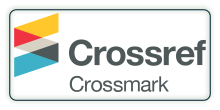E-COMMERCE AND THE EVOLUTION OF LAST-MILE DELIVERY: MEETING CUSTOMER EXPECTATIONS
DOI:
https://doi.org/10.29121/ijetmr.v10.i12.2023.1642Keywords:
Last-Mile Delivery, Technological, Digital Security and Privacy, Digital Environment, E-Commerce, Technology PrivacyAbstract
E-commerce has transformed retail, offering customers ease and accessibility like never before. However, the last-mile delivery, the product's last leg from the distribution center to the customer's doorstep, has become a major hurdle for e-commerce enterprises. This abstract examines how e-commerce businesses are adapting to shifting consumer expectations in last-mile delivery. The abstract opens with e-commerce's fast expansion and influence on conventional retail methods. It underlines the trend toward online buying, which increases demand for efficient and rapid delivery services. The abstract then discusses last-mile delivery and consumer satisfaction. Delivery speed, adaptability, openness, and sustainability affect client expectations. The abstract also discusses last-mile delivery improvements. Drones, autonomous trucks, and smart lockers improve delivery efficiency and convenience. Crowd shipping, which uses local resources to improve last-mile operations, is also examined. The abstract highlights e-commerce enterprises' last-mile delivery issues. It covers urban congestion, unsuccessful deliveries, refunds, and transportation environmental effect. To satisfy client expectations, sustainable and eco-friendly delivery options are needed. Finally, the abstract emphasizes customer-centric last-mile delivery. Real-time monitoring, proactive communication, and customizable delivery choices improve customer experience. To maximize last-mile operations, e-commerce enterprises, logistics providers, and local stakeholders should collaborate. This abstract illuminates e-commerce last-mile delivery. It emphasizes the necessity of satisfying consumer expectations in this key phase of the delivery process and gives insights into the methods and technologies used by e-commerce enterprises to improve last-mile delivery and customer happiness.
Downloads
References
Bergmann, F. M., Wagner, S. M., & Wenckebach, M. (2020). Integrating First-Mile Pickup and Last-Mile Delivery on Shared Vehicle Routes for Efficient Urban E-Commerce Distribution. Transportation Research Part B: Methodological, 131, 26–62. https://doi.org/10.1016/j.trb.2019.09.013 DOI: https://doi.org/10.1016/j.trb.2019.09.013
Klein, P., & Popp, B. (2022). Last-Mile Delivery Methods in E-Commerce: Does Perceived Sustainability Matter for Consumer Acceptance and Usage? Sustainability, 14(24), 16437. https://doi.org/10.3390/su142416437 DOI: https://doi.org/10.3390/su142416437
Li, F., Fan, Z.-P., Cao, B.-B., & Li, X. (2020). Logistics Service Mode Selection for Last Mile Delivery: An Analysis Method Considering Customer Utility and Delivery Service Cost. Sustainability, 13(1), 284. https://doi.org/10.3390/su13010284 DOI: https://doi.org/10.3390/su13010284
Olsson, J., Hallström, D., & Valenok, Y. (2022). Customer Experience Dimensions In Last-Mile Delivery: An Empirical Study on Unattended Home Delivery. International Journal of Physical Distribution & Logistics Management, 53(2), 184–205. https://doi.org/10.1108/IJPDLM-12-2021-0517 DOI: https://doi.org/10.1108/IJPDLM-12-2021-0517
Piotrowicz, W., & Cuthbertson, R. (2018). Last Mile Framework for Omnichannel Retailing: Delivery from the Customer Perspective. In Exploring Omnichannel Retailing (pp. 267–288). Springer. https://doi.org/10.1007/978-3-319-98273-1_12 DOI: https://doi.org/10.1007/978-3-319-98273-1_12
Ranatunga, M. I., Wijayanayake, A. N., & Minghella, D. H. (2022). Simulation-Based Efficiency Assessment of Integrated First-Mile Pickup and Last-Mile Delivery in An E-Commerce Logistics Network. In 2022 International Research Conference on Smart Computing and Systems Engineering (SCSE). IEEE. https://doi.org/10.1109/SCSE56529.2022.9905083 DOI: https://doi.org/10.1109/SCSE56529.2022.9905083
Valenok, Y., Shams, P., Hallström, D., & Hjorth, K. (2019). Service Innovation in E-Commerce Last Mile Delivery: Mapping the E-Customer Journey. Journal of Business Research, 101, 461–468. https://doi.org/10.1016/j.jbusres.2019.01.016 DOI: https://doi.org/10.1016/j.jbusres.2019.01.016
Vrhovac, V., et al. (2023). Measuring E-Commerce User Experience in the Last-Mile Delivery. Mathematics, 11(6), 1482. https://doi.org/10.3390/math11061482 DOI: https://doi.org/10.3390/math11061482
Wenckebach, M., & Anjelica, M. (2018). Classification of Last-Mile Delivery Models for E-Commerce Distribution: A Global Perspective. In City Logistics 1 (pp. 209–229). Wiley. https://doi.org/10.1002/9781119425519.ch11 DOI: https://doi.org/10.1002/9781119425519.ch11
Zheng, S. (n.d.). The Prospects of Different Last-Mile Delivery Modes of E-Commerce Logistics in Hong Kong [Master’s Thesis, The University of Hong Kong]. https://doi.org/10.5353/th_b5703660 DOI: https://doi.org/10.5353/th_b5703660
Published
How to Cite
Issue
Section
License
Copyright (c) 2023 Dr. Prakash Divakaran, Dr. Vandana Mishra Chaturvedi

This work is licensed under a Creative Commons Attribution 4.0 International License.
License and Copyright Agreement
In submitting the manuscript to the journal, the authors certify that:
- They are authorized by their co-authors to enter into these arrangements.
- The work described has not been formally published before, except in the form of an abstract or as part of a published lecture, review, thesis, or overlay journal.
- That it is not under consideration for publication elsewhere.
- That its release has been approved by all the author(s) and by the responsible authorities – tacitly or explicitly – of the institutes where the work has been carried out.
- They secure the right to reproduce any material that has already been published or copyrighted elsewhere.
- They agree to the following license and copyright agreement.
Copyright
Authors who publish with International Journal of Engineering Technologies and Management Research agree to the following terms:
- Authors retain copyright and grant the journal right of first publication with the work simultaneously licensed under a Creative Commons Attribution License (CC BY-SA 4.0) that allows others to share the work with an acknowledgment of the work's authorship and initial publication in this journal.
- Authors can enter into separate, additional contractual arrangements for the non-exclusive distribution of the journal's published version of the work (e.g., post it to an institutional repository or edit it in a book), with an acknowledgment of its initial publication in this journal.
- Authors are permitted and encouraged to post their work online (e.g., in institutional repositories or on their website) before and during the submission process, as it can lead to productive exchanges, as well as earlier and greater citation of published work.
For More info, please visit CopyRight Section






























